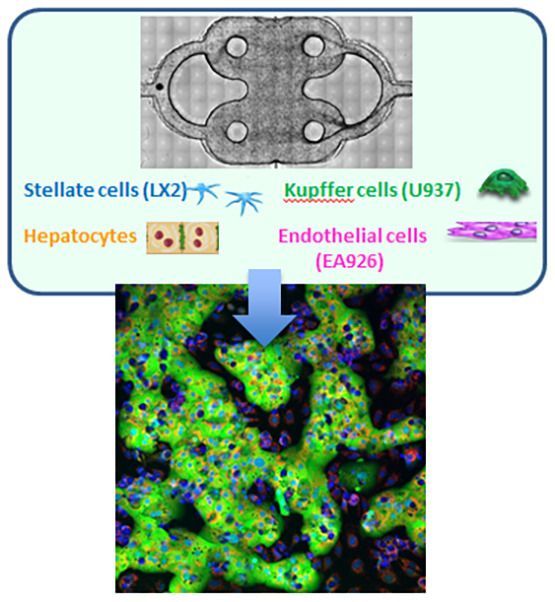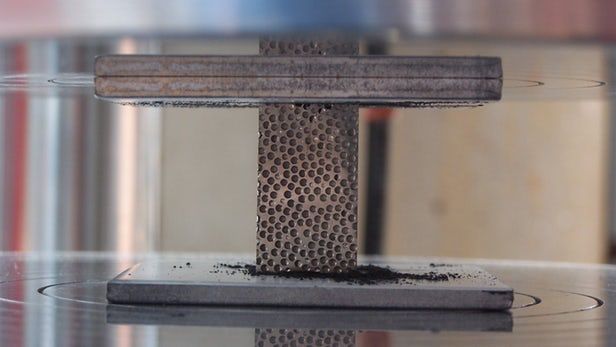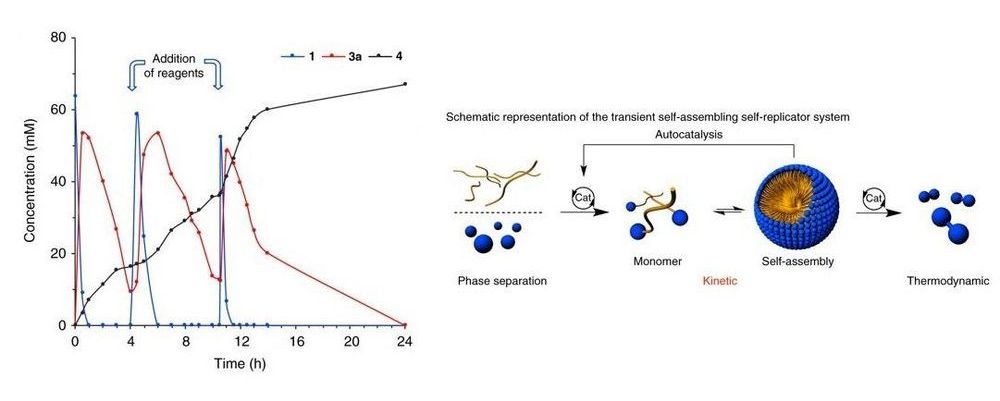Page 8484
May 22, 2019
Zero-Point Energy Makes Power Pervasive & Free
Posted by Quinn Sena in category: space travel
What would happen if energy, electricity, and power were pervasive and free? When a bum all the way up to an entire country would no longer have to worry about wars over oil, flights running out of fuel, or having to build a giant rocket to carry a giant tub of rocket fuel in order to get it to escape velocity and keep it going to Mars.
When you combine those two concepts: available anywhere at zero cost, you’ve got something more valuable than when man discovered fire.
Note that humankind didn’t invent fire. We discovered it. Because it already existed.
Continue reading “Zero-Point Energy Makes Power Pervasive & Free” »
May 22, 2019
Metal foams could provide lightweight radiation shielding
Posted by Quinn Sena in category: energy
Radiation generally comes under the heading of “things you want to stay away from,” so it’s no surprise that radiation shielding is a high priority in many industries. However, current shielding is bulky and heavy, so a North Carolina State University team is developing a new lightweight shielding based on foam metals that can block X-rays, gamma rays, and neutron radiation, as well as withstanding high-energy impact collisions.
May 22, 2019
Future Growth: Organs-on-chips Market New Revenue Sources, Latest Trends and 2025
Posted by Quinn Sena in categories: biotech/medical, business, computing
Global Organs-on-chips Market Size, Status and Forecast 2019–2025
The report provides insightful details – how clients enhance their basic leadership capacity within the worldwide Organs-on-chips Market business. Utilizing figures and flowcharts are brief in this report, the specialists represented to the analyzed information in a superior acceptable manner. This report identifies that rapidly changing market trends and competitive landscape with growth significant CAGR during Forecast. Along, with latest marketing factors those are essential to monitor market performance and crucial decisions for progress and profitability.
According to this study, the next Y-o-Y (year over year) Organs-on-chips market will register a XX% CAGR in terms of revenue, the Astonishing Growth market size will reach US$ XX million by 2025, from US$ XX million in 2019. In particular, this report presents the global market share (sales and revenue) of key companies in the Market New Research Study.
May 22, 2019
Can Miracle Material Stop Radiation?
Posted by Quinn Sena in categories: nuclear energy, particle physics
 Gamma radiation is the most penetrating and energetic form of nuclear radiation. To absorb half the incoming Gamma you need two and a half inches of concrete or almost half an inch of lead. So my eyebrows went up when I saw a press release for an organization called Radiation Shielding Technologies, or RST, selling protective clothing with this startling claim:
Gamma radiation is the most penetrating and energetic form of nuclear radiation. To absorb half the incoming Gamma you need two and a half inches of concrete or almost half an inch of lead. So my eyebrows went up when I saw a press release for an organization called Radiation Shielding Technologies, or RST, selling protective clothing with this startling claim:
“DemronTM not only protects against particle ionizing/nuclear radiation (such as Beta and Alpha), but does what NO OTHER full body radiation protection can do: shield against X-ray and low-energy Gamma emissions.”
You’ve read your last complimentary article this month. To read the full article, SUBSCRIBE NOW. If you’re already a subscriber, please sign in and and verify your subscription.
May 22, 2019
New way to activate stem cells to make hair grow
Posted by Quinn Sena in categories: biotech/medical, life extension
UCLA researchers have discovered a new way to activate the stem cells in the hair follicle to make hair grow. The research, led by scientists Heather Christofk and William Lowry, may lead to new drugs that could promote hair growth for people with baldness or alopecia, which is hair loss associated with such factors as hormonal imbalance, stress, aging or chemotherapy treatment.
The research was published in the journal Nature Cell Biology.
Hair follicle stem cells are long-lived cells in the hair follicle; they are present in the skin and produce hair throughout a person’s lifetime. They are “quiescent,” meaning they are normally inactive, but they quickly activate during a new hair cycle, which is when new hair growth occurs. The quiescence of hair follicle stem cells is regulated by many factors. In certain cases they fail to activate, which is what causes hair loss.
May 22, 2019
Tie2 activation promotes choriocapillary regeneration for alleviating neovascular age-related macular degeneration
Posted by Quinn Sena in categories: biotech/medical, life extension
Choriocapillary loss is a major cause of neovascular age-related macular degeneration (NV-AMD). Although vascular endothelial growth factor (VEGF) blockade for NV-AMD has shown beneficial outcomes, unmet medical needs for patients refractory or tachyphylactic to anti-VEGF therapy exist. In addition, the treatment could exacerbate choriocapillary rarefaction, necessitating advanced treatment for fundamental recovery from NV-AMD. In this study, Tie2 activation by angiopoietin-2–binding and Tie2-activating antibody (ABTAA) presents a therapeutic strategy for NV-AMD. Conditional Tie2 deletion impeded choriocapillary maintenance, rendering eyes susceptible to NV-AMD development. Moreover, in a NV-AMD mouse model, ABTAA not only suppressed choroidal neovascularization (CNV) and vascular leakage but also regenerated the choriocapillaris and relieved hypoxia. Conversely, VEGF blockade degenerated the choriocapillaris and exacerbated hypoxia, although it suppressed CNV and vascular leakage. Together, we establish that angiopoietin-Tie2 signaling is critical for choriocapillary maintenance and that ABTAA represents an alternative, combinative therapeutic strategy for NV-AMD by alleviating anti-VEGF adverse effects.
Neovascular age-related macular degeneration (NV-AMD) is a leading cause of irreversible vision loss among elderly persons in developed countries. NV-AMD is characterized by the formation of choroidal neovascularization (CNV), an ingrowth of abnormal blood vessels from the choroid through Bruch’s membrane into the sub-retinal pigment epithelium (RPE) or subretinal space. Throughout this ingrowth, abnormal leakages of fluids and bloods occur into the retina, causing vision distortion and loss of central vision (2, 3). To treat neovascular eye diseases including NV-AMD, anti–vascular endothelial growth factor A (VEGF) therapy has largely been used based on the fact that an excessive production of VEGF from hypoxic cells in the retino-choroidal complex is critical in the pathogenesis and features of neovascular eye diseases (3, 4).
May 22, 2019
The Speeder — World’s first jet-powered flying motorcycle
Posted by Quinn Sena in category: transportation
May 22, 2019
We Finally Know Where The Scandalous Ozone-Destroying Chemicals Are Really Coming From
Posted by Quinn Sena in category: climatology
It’s been exactly one year since US scientists reported a mysterious surge in ozone-destroying chemicals, known as chlorofluorocarbons (CFCs).
Banned in 1987 under the globally signed Montreal Protocol, there was only one explanation: somewhere out there, in an unknown location, someone must have gone rogue, setting back progress on the ozone hole by a decade or more.
After much speculation, the whereabouts and magnitude of these harmful emissions has been confirmed in scientific research. As earlier reporting in The New York Times had already suggested, they seem to be coming from the northeast coast of mainland China.
May 22, 2019
Self-replicator that is simultaneously created and destroyed may lead to better understanding of life
Posted by Quinn Sena in category: biological
As living organisms eat, grow, and self-regenerate, all the while they are slowly dying. Chemically speaking, this is because life is thermodynamically unstable, while its ultimate waste products are in a state of thermal equilibrium. It’s somewhat of a morbid thought, but it’s also one of the characteristics that is common to all forms of life.
Now in a new study, researchers have created a self-replicator that self-assembles while simultaneously being destroyed. The synthetic system may help researchers better understand what separates biological matter from simpler chemical matter, and also how to create synthetic life in the lab.
The researchers, Ignacio Colomer, Sarah Morrow, and Stephen P. Fletcher, at the University of Oxford, have published a paper on the self-replicator in a recent issue of Nature Communications.

















